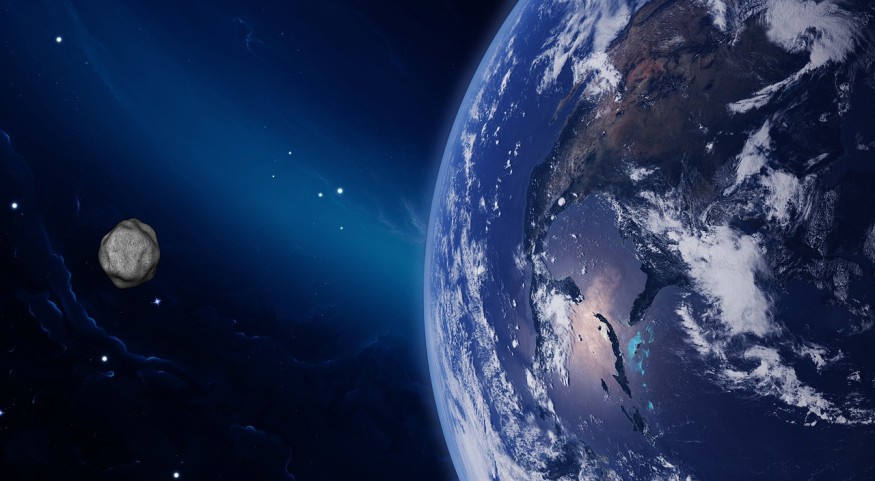NASA has issued another asteroid alarm, reminding us that the Solar System is a lethal billiard table of gigantic boulders, with hazardous objects flying by us practically daily.
According to German News Site news.de, the space agency now has a list of about 1.1 million asteroids in the solar system. Astronomers usually find thousands of these often irregularly shaped cosmic entities comprised of rock every month.
Near-Earth asteroids, which do not orbit the Sun like most asteroids in the asteroid belt but approach close to the Earth's orbit and can thus be detrimental to the Earth, are given special attention.

1,800 Ft.-Wide Trojan Asteroid Trapped in the Same Orbit As Earth is Great for Future Flyby Missions, Astronomers Suggest
1 Potentially Hazardous Asteroid Will Safely Pass By Monday
2001 FO32 is the largest asteroid to sweep by Earth this year and NASA designated it as a "potentially hazardous asteroid." It will be at its closest to the planet - within 1.25 million miles of the Earth on Monday, which is 5.25 times the distance between the Earth and the moon. However, the astronomers said that it will safely pass by the planet.
"We know the orbital path of 2001 FO32 around the Sun very accurately since it was discovered 20 years ago and has been tracked ever since," said Paul Chodas, director of the Center for Near-Earth Object Studies (CNEOS). "There is no chance the asteroid will get any closer to Earth than 1.25 million miles."
3 Asteroids Making a Safe Flyby on Monday
As of March 21, three asteroids are making near approaches to Earth. The first is a bus-sized space rock, while the other two are near-Earth objects the size of airplanes.
According to NASA JPL, the bus-sized asteroid will make a safe flyby with the closest approach of 663,000 miles. It is approximately 38 feet broad.
The asteroid 2022 EE4, the size of an airplane, is the next space rock to pass by safely. It's around 100 feet wide and travels at 4.3 million miles per hour. The other is the 120-foot-wide asteroid 2022 DG3, which will travel about 4.35 million miles.
9 Orbiting Cruisers Approaching The Planet Sunday
Aside from the aforementioned, there are nine asteroids that are approaching the planet earlier. The asteroids approaching on Sunday are grouped in two - Apollo, those crossing the planet's orbit from outside; and Aten, the near-Earth type asteroids crossing the planet's orbit from within. Check out the various orbiting cruisers below.
- Apollo asteroids near Earth today: "405762 (2005 YO180)", "(2017 VZ1)", "(2018 GA2)", "(2021 EB4)", "(2022 ER5)"
- Near Earth Aten asteroids today: "(2013 ES41)", "(2015 FA285)", "(2021 TM2)", "(2022 EQ6)"
There are also Amur and Atera types of asteroids, but they do not cross the Earth's orbit. Atira steroids, also called inner earth objects, are very close to the planet and within orbit.
ALSO READ: Space Events, Discoveries From the Past Week Offers Glimpse of the Cosmos for Future Explorations
Comet, Asteroid Threat
Millions of objects of all sizes orbit the Sun, Astronomy.com said. Asteroids and comets that pass within 120 million miles (193 million kilometers) of the Sun are considered near-Earth objects.
A near-Earth object is considered a hazard by astronomers if it comes within 4.6 million miles (7.4 million kilometers) of the planet and has a diameter of at least 460 feet (140 meters).
If a celestial body of this size crashed with Earth, it might obliterate whole towns and destroy entire regions. The larger ones, such as those measuring 0.6 miles (1 km) or more, have the potential to have global impacts and even cause mass extinctions.
A 6-mile (10-km) diameter asteroid collided with what is now the Yucatán Peninsula 65 million years ago, causing the most renowned and deadly collision. It wiped out the majority of Earth's plant and animal species, including the dinosaurs.
Smaller things, on the other hand, might inflict severe harm. In 1908, a celestial mass measuring about 164 feet (50 meters) erupted over the Tunguska river in Siberia. It destroyed nearly 80 million trees across an area of 830 square kilometers (2,100 square km).
An asteroid measuring about 65 feet (20 meters) in diameter exploded in the sky 20 miles (32 kilometers) over Chelyabinsk, Russia, in 2013. It ejected enough energy to detonate 30 Hiroshima bombs, injuring over 1,100 people and causing US$33 million in damage.
RELATED ARTICLE : How Often Do Shooting Stars Appear? Experts Say Meteor Showers Are Common Than Most People Thought
Check out more news and information on Space in Science Times.












